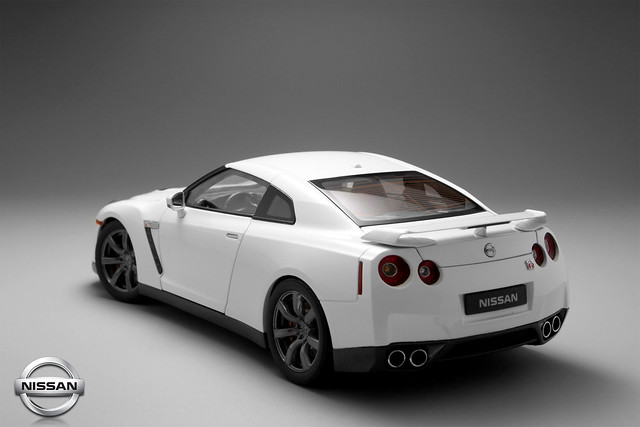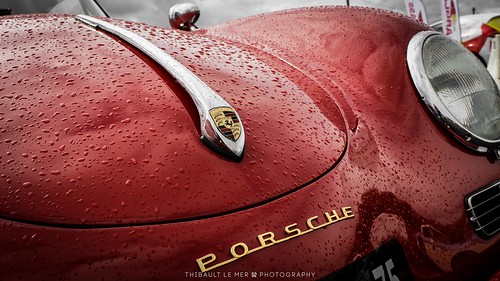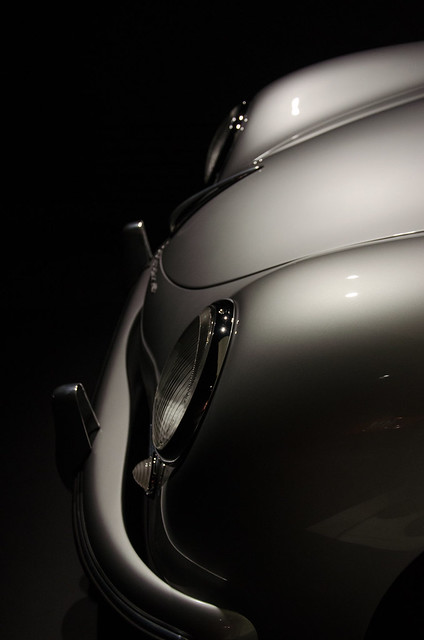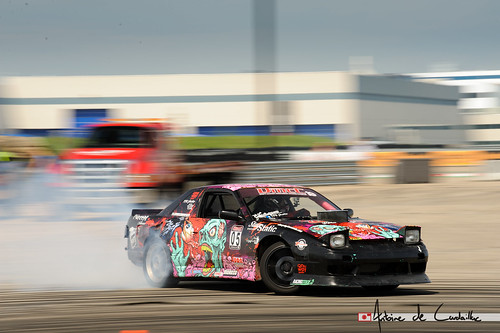As with other genres of photography, photographing cars has its own set of “rules”. This doesn't mean that you need to follow all of them strictly–breaking the rules will sometimes get you the best results. However, if you're going to break the rules at the right time and in the right way, then you first need to know what those rules are.
Photographing cars is akin to photographing people, with the obvious difference being that cars are large chunks of metal, plastic, and rubber engineered to perfection and beyond. Every automobile has its own character, expression, and a statement to make. You, as the person behind the camera, have the responsibility of capturing all those elements. In order to do so, it is rather necessary to be a petrol-head. At the least, you should know the basic principles of automotive technology. If you don’t really know cars, it is hard to capture the unique things each and every car model has to offer. If you know your cars well enough, then you will also be considering your subjects from a consumer-perspective. This means you’ll know which elements you don't want to showcase, and which ones you'll want to emphasize. Just think: you cannot portray a Prius as you would portray a Nissan GTR, right?

Getting the right image of a car is all about capturing the pure essence of it, and this can rarely be accomplished in one photo. This is due to the fact that the car has much more to offer than can be viewed from a single angle. Exterior, interior, engine, and many other additional details can hardly be captured in one shot!
As we delve into this step-by-step guide, let’s first explore the technical details you need to have in mind when photographing cars:
1. How to Choose the Best Lens
Since cars are engineered to perfection, it is really important to capture the design as it is. That means choosing a lens which has the least amount of distortion. You don’t want any model-defining lines turned crooked or curved, for any reason. Every car enthusiast will notice when the design is skewed, and this will reflect poorly upon you, as the photographer. Focal length is important, as well. You need a lens that has a bit of zoom compression, but not too much–something around 35-50 should do.
2. Getting the Best Light Will Give You the Best Results
As with any other type of photography, light plays a major role in photographing cars. You will need to do a lot of light shaping when it comes to vehicles, since you must emphasize every line in the car. Take care to not blow out one or more of the many reflective surfaces, including the car's paint. And on the topic of reflections, make sure you aren't visible in any of the shots. If you find that you are, then clone yourself out.
3. Why the Setting and Environment Can Make or Break Your Photograph
The background is another vital aspect of any car photo. If you photograph a car at a motor show, for example, with people touching the vehicle and showing up in the frame, the background will be busy and messy, and the photograph will turn out looking like an ambiguous snapshot. That said, you need a good clean background when photographing a car. When you think: “Now, where does this car belong?” then most likely a road, garage, or other similar location will come to mind as a suitable background.
4. What You Should Know About the Human Factor
This element varies from picture to picture, but there is really only one straightforward rule to bear in mind: if the car is parked, there is no room for people. On the other hand, if it is moving, there can’t be a ghost driving the car, right? The only exception to this is made when utilizing a model in the frame, or when the owner of the car wants to pose with it.
However, getting a decent image of a car is not just about achieving a good light setup or having an ultra-sharp lens. You have to know how to use all those components to your advantage. Let's look at the creative side of this process.

1. Choosing the Best Angle
First and foremost, you have to look for the prominent and/or iconic features of the car you are about to photograph. If you aren't familiar with the make and model, do your research. Almost every iconic model has some features that make it recognizable and, more importantly, distinguishable. I’m not talking about the overall shape of the car. I’m talking about the tiny bits that make it unique. For example, you will always recognize Rolls Royce by its gigantic, square, front grill and the “Spirit Of Ecstasy” mascot mounted on top of it. Another example is that of the LED lights feature that modern Audi lines have, or the racing stripes that Shelby sports. Things like these must be present and emphasized in the photo.
2. Considering the Car's Exterior
Photographing the exterior of the car means that you need to capture, as I've mentioned a few times before, the essence of the bodywork. That sounds simple, but in truth is far from it. This can be successfully achieved by using natural, artificial, or combined light. If using natural or combined light, you’ll need to scout a location that will suit the car well, simultaneously serving as a good background. It is crucial to get that aspect right since you do need a complete picture, after all. If you are using artificial light only, then you are probably going to be doing studio/hangar shots, which means you’ll need to spend a few hours getting the light right, or do compositing if you can’t afford that many lights. Depending on the background scene and the features of the car itself, you'll need to decide at the time of shooting whether or not to turn the car's headlights on. If you opt to have the lights on, be sure you don’t use the high beams since the amount of flare will be too high, and you’ll end up just wasting your time.
3. Interior.
Now this is where it gets tricky. If you are photographing a bus, it will be tad easier, since you’ll be able to get the interior in a single frame with a decent wide angle lens (and use profile corrections to fix the distortion afterwards). But, what if it is a car like the new Fiat 500, where a single grown man can barely fit inside? That’s where experience with panoramas comes in handy. You’ll have to stitch multiple shots, and stitch them perfectly, for that matter. The interior of the car is really detailed, and in most of the modern cars there are millions of buttons to fiddle with, each of them having its own light. Turn everything on and balance that light with the amount of light coming into the interior (regardless of whether it is flash or natural). Make sure that the interior light is nice and soft, and the temperature is perfect. Bust out your sharpest lens, since every bit of texture matters. Don’t break your back, however; there are many interior shots done in tiny cars which involve getting rid of the back glass, or even a door, for that matter.
4. Don't Forget to Photography the Details
As mentioned before, you can’t leave out the details. Whether capturing the interior or the exterior, the details must be there. Some of the iconic or innovative elements, including badges and the like, often demand separate images be taken of them alone. Presenting these images will add to the value of the whole product when cataloging a vehicle.

5. Dirt.
Some cars look better clean, some look better dirty. Depending on the intended purpose of a particular car, you will need to decide whether the car should be spotless and shiny, or if it will be sporting mud from top to bottom. If you were to photograph a classy town car or other luxury vehicle and it is dirty, then the grime will ruin the shot, taking away that distinguishing element of class. You won’t be able to emphasize the line, style, and character this fancy car has. On the other hand, if you photograph a car that is meant to travel through mud, gravel, and anything except asphalt, then portraying it spotlessly clean is a bit counter-intuitive, isn't it? Let's say you were to photograph a rally version of the Subaru Impreza. It just can’t be shown clean and idly standing in a garage.
6. Get Accurate Colors
You must make the color right. You can’t allow yourself to miss the color balance. It is imperative to remember that if the color temperature is wrong, the car color will also be wrong. When you are shooting for a client, the color is what they notice first. If you mess up the color, you've already failed your gig.
7. Should You Use Motion?
Cars are meant to move. That is why it is always nice to create a few images that depict motion. No matter whether you will be panning the shot, or photographing the vehicle while moving parallel to it, shots in motion always look good and are greatly appreciated by the car-enthusiasts. Keep in mind that all the things mentioned before apply here, as well. You still need perfect framing, great light, and a nice setting.

I must mention motorsport car photography as a separate category. This is the toughest type of car photography to do. It is the toughest since you are just an individual spectator there among other photographers, spectators, and distractions, and you have a very short window of time in which to capture the shot. That said, your gear needs to be the best-of-the-best, because these cars move fast. You’ll need the aperture and ISO available to freeze the shot, if necessary, as well as the focal lengths to shoot far and wide. You’ll need a body that shoots many frames per second without breaking a sweat, like Canon’s 1DX, for example. Even having on-hand all the gear you could want doesn't necessarily guarantee that you’ll get the shot, as there are a lot of variables. However, getting a shot of a car power-sliding, cloaked in the smoke of burning rubber, while shooting flames out of the exhaust pipes is pretty much the biggest reward you can get, and is well worth the effort.
In closing, shoot every car as if it were your own, take your time (if you can afford it), and give it your best effort. Also, shoot several times, use different angles, experiment with lenses, and keep everything in line. Good luck!




